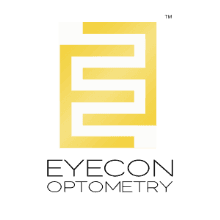FREQUENTLY ASKED QUESTIONS
1. What are the side effects of Low Concentration Atropine use?
Side effects of low concentration Atropine are very minimal due to the low dosage. With any drop, allergy and allergic red eye can occur, but studies show that it is rare. With higher dose Atropine, sun sensitivity, dilation, and difficulty seeing up close are side effects, but these are not seen in studies when lower doses are used.
2. Do I have to continue to wear glasses?
Yes, the drops do not change the prescription so normal glasses wear is needed. Contact lenses can be worn as well, but it is recommended to wait 10 minutes after instilling drops.
3. Can I combine Atropine with other myopia treatments (such as orthokeratology or multifocal contact lenses)?
Yes, but it is recommended to start one treatment first to determine the effectiveness of the treatment. After 6 months have passed, a second treatment can be added to increase effectiveness. Studies have shown that atropine and orthokeratology is additive in terms of effectiveness.
4. If I want to discontinue Atropine and start orthokeratology is that ok?
Yes, this is definitely something that can be done. Before discontinuing the drops, we recommend having completed the orthokeratology fitting. Our doctors will evaluate every 6 months to ensure that the new orthokeratology treatment is effective.
5. Can I discontinue my Atropine treatment at any point?
It is possible to discontinue Atropine treatment at any time if the treatment is not effective or is not well tolerated by the patient. However, it is very important to discuss this with your optometrist before doing so. A new myopia control treatment plan needs to be set before discontinuing any drops. The drops are only effective when used. If the drops are discontinued, myopia will continue to progress. For most patients with myopia, progression does not stop until after college.
6. Is Atropine for Myopia Control FDA Approved?
Currently all treatment options for myopia control are what is called “off label”. This means that the method is approved by the FDA, but not for the specific task at hand. It is not as uncommon as one may think, with a recent study showing that 78.9% of children discharged from pediatric hospitals were taking one “off label” medication.

 7217 Reseda Blvd., Reseda, CA 91335
7217 Reseda Blvd., Reseda, CA 91335



